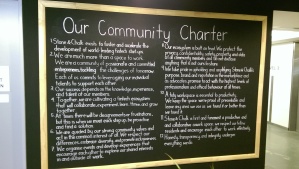Max Weber ne cesse d’être découvert et redécouvert. C’est récemment en lisant ou relisant plusieurs de ses écrits que je suis tombé sur cette notion de « communautés émotionnelles » (Weber, 1971, &5, pp. 204-211).
Le concept est à mettre en perspective. Il est mentionné et défini dans le tome 2 d’Economie et société (traduction française de 1971 avec pour sous-titre : « L’organisation et les puissances de la société dans leur rapport avec l’économie). Le projet de Weber est d’articuler l’économique et le social en partant d’unités sociales, juridiques et historiques fondamentales : les communautés.
En particulier en occident, les communautés ont une histoire longue. Elles sont difficilement dissociables des « communautés domestiques » et de certaines de leurs extensions monastiques (j’ai évoqué dans un autre post la racine grecque du mot « abbé », abba, qui signifie « papa »). Les communautés sont le fondement, largement présentiel, … Read more



